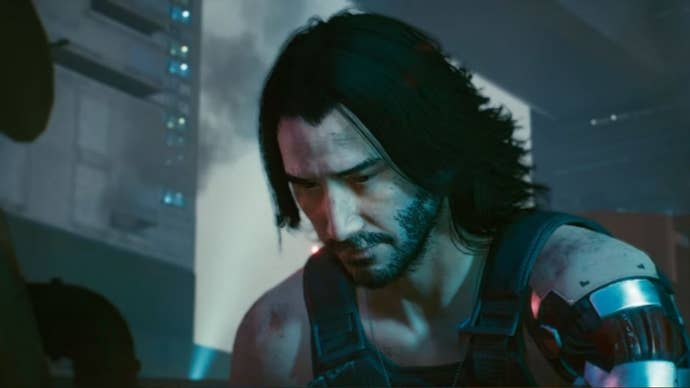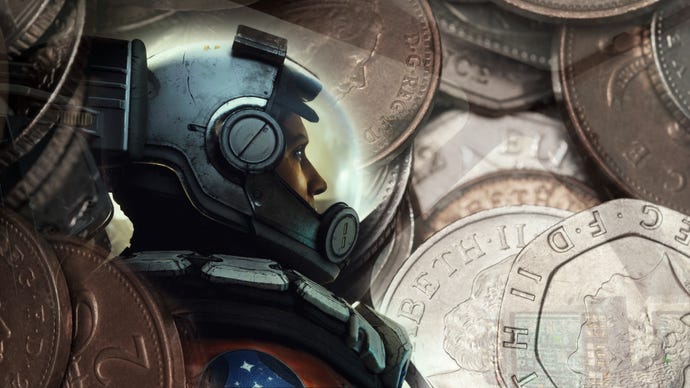$70 console games are good for developers, but they’re getting harder and harder to swallow as a consumer
Xbox joins the publishers charging $70 for new, triple-A game – and that’s good. Until you consider there’s a cost of living crisis.
Cyberpunk 2077 was a turning point for a lot of people. CD Projekt Red’s long-teased RPG masterpiece fell at the last hurdle, and its release was marred by immersion-breaking bugs, failed console versions, and a community of gamers completely underwhelmed by this premium title they’d spent upwards of $60 on.
Veteran gamers complained that “it wasn’t like this in their day,” that the halcyon days of picking a game cart off the shelf and plugging and playing were long dead. Your average gamer was beginning to complain about unfinished products being hawked for top-end prices, and patience was starting to wear thin. I have zero patience for the “lazy developer” criticism that’s flung around so casually in this industry (in 10-plus years of doing this job, I have never once met a “lazy developer” – the people on the ground floor care a lot), yet it was development staff that began to take flak for publishing-level decisions.
Perhaps a studio would rush a patch out in the first week, make an apology, then ‘fix’ their game with a groveling roadmap aimed at allowing a game to ‘reach its full potential’, but this isn’t what the consumer paid for, is it? If you booked off a day from work, spent $70 on a new entry in your favourite series, and then realised it was unplayable in its current state, you’d be frustrated, too, right? A lot of gamers will tell you this habit of patching things until they’re in the state they should have launched in is all too common these days, and perhaps they’re on to something.

But this isn’t a new phenomenon – developers had to patch games even as far back as the Nintendo 64 days, it’s just that consumers saw less of the process because burning discs and reissuing games was a less visible thing back then. But, over the past few generations, the problem has gotten worse. Or, perhaps, most noticeable. Cyberpunk 2077, Anthem, Battlefield 2042, The Callisto Protocol, Pokemon Scarlet and Violet – just a few triple-A games that have launched over the past few years that are unoptimised at best, and unplayable at worst.
And as publishers – 2K, Sony, EA, and now Microsoft – deign to charge more for their games, consumers are starting to ask “why should I pay this much for games on Day One?”
There are a few good reasons you should. Games are getting more expensive to make, for a start. In 2005, a triple-A developer making a blockbuster game would drop about $25 million-$35 million on the project. Now, the same studio with the same scope will be committing anywhere between $75 million and $150 million to get that game up and running, and the studio needs to make that money back somehow. Supporting your favourite developer is the most obvious thing you can do to keep the doors from closing for good, though sometimes even that’s not enough.

Then there’s inflation. Games, for the most part, stuck at about $60 (or £50) for 15 years, but inflation has been edging up for a while – and it’s recently exploded. It’s over 12% here in the UK at the moment, and shows no sign of receding any time soon. It stands to reason that your games cost more to buy, but it’s not the developer’s fault your wages haven’t gone up to match it. If you adjust £50 back in 2005 for inflation in 2022, you get £88.24. Mull on that for a minute.

So games get more expensive. Especially in a world still recovering from (and affected by!) Covid-19. Developers had to enable work-from-home pipelines. Publishers had to support workers in more difficult situations. Network engineers had to absorb a massive spike in traffic during the 2020 lockdowns. The gaming landscape is not the same as it was; labour is more expensive, developers are no longer accepting crunch as the norm, and the industry is – finally – starting to unionize.
Paying more for your games is good for the industry, and good for workers. But it’s totally understandable that you don’t want to pay more for games that give you less, or (at least) make you wait longer for a premium product. There’s a ‘cost of living crisis’ in the UK, and the reality of that statement is that energy companies are gouging prices whilst the government sits on its hands as inflation skyrockets. The end result is the average person is notably worse off, with the working and middle classes affected disproportionately. TL;DR: the biggest gamers have less money to spend on games.
So seeing Microsoft ask for $70 for new titles stings; it makes me think that I will only be able to buy maybe three or four brand-new games every year… and only from developer/publisher combos I trust enough to commit to Day One sales with (I used to think I could count Game Freak/Nintendo in that group, alas). This is down from maybe six or seven brand new games, even a few years ago. There’s a reason services like Game Pass and PS Plus are exploding with popularity right now; the value-for-money proposition is off the charts versus massive one-off payments on marquee games. Sony’s commitment to its premium pricing may prove to be unpopular in the hard months to come, and that’s only highlighted by how consumer-friendly Game Pass has proven to be over the past few years.

But despite all this, gaming is still – per-hour-of-entertainment-value basis – one of the cheapest forms of entertainment. I have paid about £20 for The Binding Of Isaac about three times (oops) and I have racked up at least 750 hours in it. By my maths, that means I get 12.5 hours of playtime for every £1 spent. That’s better than paying £12 to waste two hours of my life on Doctor Strange in the Multiverse of Madness.
So a $70 game is a hard sell, and the immediate resistance to the announcement overnight is not surprising. But consider the average developer – un-unionized, overworked, likely underpaid – before you start pointing the finger in the wrong direction. We’re all in this together, and it’s not the developers you should be angry at for things getting more expensive. Remember that.

